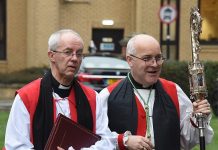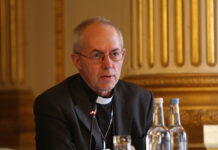For the first time, possibly in a millennium, fewer than half of all Britons call themselves Christian. This month’s updating of the 2011 census suggests the latest figure is down from 60% to 51%, with predictions that next year it will be in the 40s. No one yet knows what the pandemic has done to religious faith, but the trend across the western world is the same. At least in wealthier countries, religion of any sort is becoming a minority practice.
The archbishop of Canterbury, Justin Welby, is an ardent evangelical. His Anglican church has spent a phenomenal £240m since 2017 on a mission to “plant” new churches, apparently to no avail. Vicars are some of the most dedicated and public service-minded people I know. They are underpaid and overworked. They will be further demoralised by predictions of another 20% of worshippers poised to desert their congregations after Covid. Yet the public will regard all this as Christianity’s problem, not theirs. As the retreat continues, some will shed a tear but few will worry.
They should, for one reason. This ebbing tide will leave on the foreshore an astonishing litter of church buildings. Of 16,000 English parish churches, 12,500 are listed for preservation, with 3,000 in Grade I status. Indeed, 45% of all England’s Grade I structures are places of worship. No other country has a legacy even remotely as splendid or precious. These buildings are undemolishable.
Though standing mostly empty and underused, churches have an eerie hold on local people, Christians and atheists alike. The church is their history, their museum, their place of ceremony, their source of comfort in distress. Clergy and volunteers supply a supporting social service, gamely put by the National Churches Trust as worth £55bn a year to the national wellbeing. Many are stunningly beautiful, many others are aloof, dishevelled and grim. But they exist and are not going to vanish. All they can do is fall down, as Britain’s medieval castles did centuries ago. A derelict ruin at the centre of every town and village in Britain is not a fun prospect.
This has to be the greatest challenge ever to face cultural conservation in Britain. In the next five years, it is estimated about 350 churches face closure or demolition. Most underused churches already share services and a vicar with others. You can share a vicar but you can never share a church, any more than you can “share” a community. Its very presence denies it.
At this point I regard the problem as no longer for the Church of England but for the country, or rather for every community where these buildings are located. Most people I know fiercely want to keep their local church, even the 2,000 churches that see fewer than 10 worshippers a week – with an average age of 61. Yet wanting to save a building that stands empty virtually all week is not the same as knowing how.
Read it all at the Guardian.










